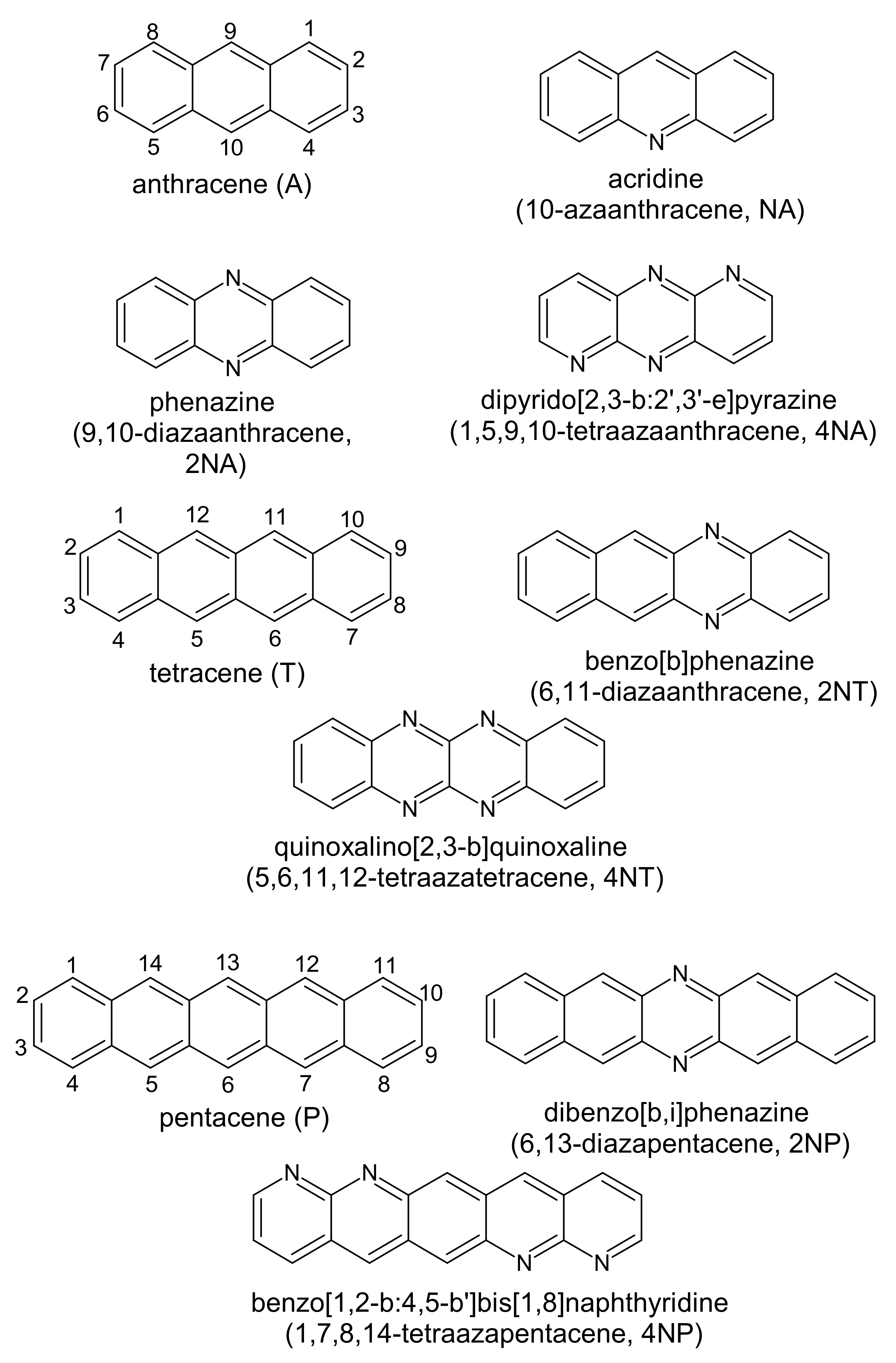Authors: Andrey Sosorev, Dmitry Dominskiy,, Roman Efremov

Abstract
The chemical versatility of organic semiconductors provides nearly unlimited opportunities for tuning their electronic properties. However, despite decades of research, the relationship between molecular structure, molecular packing and charge mobility in these materials remains poorly understood. This reduces the search for high-mobility organic semiconductors to the inefficient trial-and-error approach. For clarifying the abovementioned relationship, investigations of the effect of small changes in the chemical structure on organic semiconductor properties are particularly important. In this study, we computationally address the impact of the substitution of C-H atom pairs by nitrogen atoms (N-substitution) on the molecular properties, molecular packing and charge mobility of crystalline oligoacenes. We observe that besides decreasing frontier molecular orbital levels, N-substitution dramatically alters molecular electrostatic potential, yielding pronounced electron-rich and electron-deficient areas. These changes in the molecular electrostatic potential strengthen face-to-face and edge-to-edge interactions in the corresponding crystals and result in the crossover from the herringbone packing motif to π-stacking. When the electron-rich and electron-deficient areas are large, sharply defined and, probably, have a certain symmetry, calculated charge mobility increases up to 3–4 cm2V−1s−1. The results obtained highlight the potential of azaacenes for application in organic electronic devices and are expected to facilitate the rational design of organic semiconductors for the steady improvement of organic electronics.
Keywords: organic electronics; organic semiconductors; molecular design; crystal design; π-stacking; charge mobility
https://doi.org/10.3390/ijms21165654
Read Full: https://www.mdpi.com/1422-0067/21/16/5654